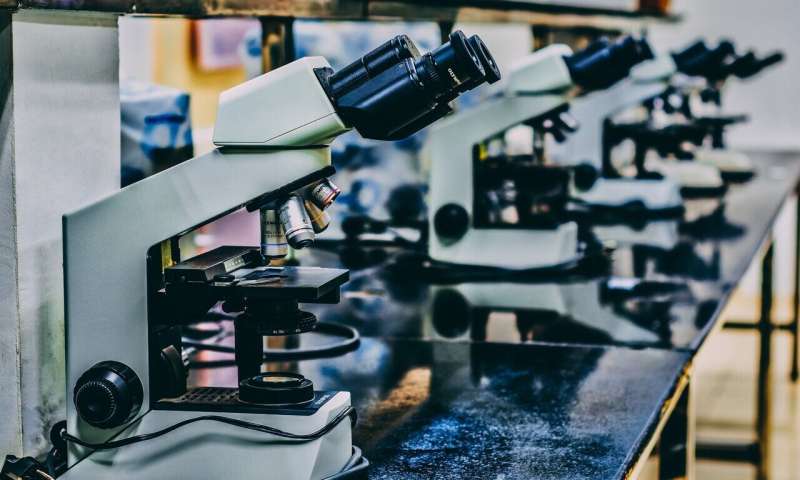Nature's toolkit for killing viruses and bacteria

They burst out of toilet bubbles, swim across drinking water, spread through coughs. Tiny infectious microbes—from the virus that causes COVID-19 to waterborne bacteria—kill millions of people around the world each year. Now engineers are studying how zinc oxide surfaces and natural hydrodynamic churning have the power to kill pathogens first.
"Bacterial contamination of common surfaces and of drinking water have been traditionally the main infection routes for transmission of serious diseases, often leading to mortality," said Abinash Tripathy, a researcher in mechanical and process engineering at ETH Zurich. "Our goal was to design a surface that can address both issues."
His group submerged clean zinc in hot water for 24 hours, which formed a zinc oxide surface covered in sharp nanoneedles. Then they introduced E. coli bacteria.
The surface kills almost all bacteria cultured on top of it very efficiently. And the biggest surprise? When sitting in contaminated water, the surface kills all waterborne E. coli within three hours—even bacteria it didn't touch.
This water disinfection at a distance works because the process generates a reactive oxygen species, which damages the cell walls of bacteria. The group from ETH Zurich, IIT Ropar India, and Empa, Switzerland, presented their initial findings at the 73rd Annual Meeting of the American Physical Society's Division of Fluid Dynamics.
In Southeast Asian and African countries where clean drinking water is scarce, current solar water disinfection methods take up to 48 hours and require a minimum intensity of sunlight. The new zinc oxide surface speeds up the disinfection process and does not need light.
"This surface can be used to disinfect water in remote areas at a very low cost," said Tripathy. "The fabrication technique is environmentally friendly, simple, and economical."
Surface and waterborne pathogens aren't the only killers. As the COVID-19 pandemic has reinforced, airborne viruses and bacteria pose a serious global challenge for disinfection.
The very droplets that carry pathogens through the air can play a role in destroying them. In the microseconds that droplets take to form, their fluids rearrange rapidly—stressing the microbes within.
"Think of a bucket with a fish in it. One imagines that if you start churning the fluid in the bucket too quickly, the fish won't be very happy," said Oliver McRae, a mechanical engineer. "It's a similar kind of thing—albeit on a much, much smaller scale—when you have, say, a pathogen in a droplet. Eventually the fluid's going to agitate too much for that bacteria or virus to survive."
McRae and a team from Boston University and the Centers for Disease Control and Prevention were studying how hydrodynamic agitation works when environmental bubbles produce droplets. After the onset of the pandemic, they started modeling droplets similar to those produced by the lungs and respiratory tract.
Using computational fluid dynamics, the team predicted how agitation works during aerosol formation. They discovered that stressors are very sensitive to droplet size. If the droplet shrinks or grows by one order of magnitude, the stressors change by two-and-a-half orders of magnitude.
The research could help explain why pathogens survive in some droplets and not others.
"Our focus has been on quantifying what the stressors are in these droplets," said McRae. "Hopefully this will be used in the future as part of a larger model to predict aerosol-based disease transmission."
More information: Environmental Friendly and Scalable Fabrication of Antibacterial ZnO-Nanostructured Surfaces, meetings.aps.org/Meeting/DFD20/Session/Z01.12
Agitation May Naturally Disinfect the Smallest Pathogen-Laden Aerosols, meetings.aps.org/Meeting/DFD20/Session/S03.21
Provided by American Physical Society





















